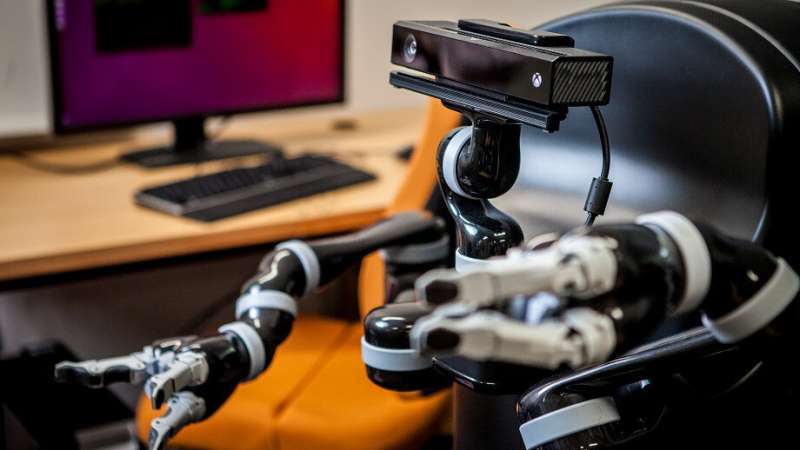
ANU researcher Hanna Kurniawati is helping robots problem solve and care. Her work has not just shaped how AI works every day; it’s been recognized with a major global prize.
Today’s robots are so advanced that they are learning to dance like humans.
But can they think like us?
That’s the question Associate Professor Hanna Kurniawati from the ANU College of Engineering and Computer Science is trying to answer.
She has spent much of her career researching ways to develop smarter and more reliable robots that can not only think like us, but empathize too.
“I think there needs to be a differentiation as to whether artificial intelligence (AI) and robots are behaving ethically and whether the development of AI and robots is done ethically,” Associate Professor Kurniawati says.
“We are looking into this exact issue by trying to develop AI and robots that can account for the concerns of others, which is the first step towards empathy.”
With colleagues from the ANU Humanising Machine Intelligence group, the CS Futures Fellow is developing software to help machines make the right decisions in situations that require them to problem solve.
“Any robot must be able to reason well about what it should do and how it should behave in a given environment despite various types of uncertainty,” Associate Professor Kurniawati says.
“Examples of this uncertainty can include a lack of understanding about the world around them.”
In 2008, Associate Professor Kurniawati had her work on how to get robots to behave well published in Robotics: Science and Systems IV with co-authors from the National University of Singapore (NUS).
“We developed an effective algorithm to help the robot make the best possible decisions when faced with a number of puzzling scenarios while also being able to understand the consequences of its decisions,” she says.
Thirteen years later and the foundations of the team’s work has been used to instruct robots how to move objects, to integrating aircraft collision avoidance tech in planes and pedestrian avoidance features in self-driving cars.
“Our 2008 work is really just the tip of the iceberg in terms of how promising the future of AI really is,” Associate Professor Kurniawati says.
“Interestingly, our methods have also been applied outside of robotics, such as helping identify vulnerabilities in computer networks.”
Last week, Associate Professor Kurniawati and her NUS associates were recognized for their contribution to the field of robotics with the Robotics Science and Systems Test of Time award.
It is only given after at least 10 years has passed since the research was first published and this is just the second time anyone has received the award.
“This is an incredible achievement and I am honored to have been recognized as a recipient,” Associate Professor Kurniawati says.
“When we first starting working on AI developments and manipulating robot behavior nearly 15 years ago, many people were not as interested in this field as they are today, nor did they believe it would ever become a useful resource with real-world applications.”
Associate Professor Kurniawati says the future focus of AI will be how researchers create systems that allow robots to work hand-in-hand with humans.
“Take for instance a helicopter pilot who is under immense pressure during a search and rescue mission or evacuating people from bushfire areas,” she says.
“An AI system could provide guidance about the best possible strategies that could help evacuate people safely.
“Similarly, robots could be used to perform jobs that are dangerous for humans, such as fixing underwater structures deep in the ocean.
“But this requires a robot that is robust enough to operate under harsh environmental conditions so there is still a lot of work left to do.”
Underwater robot does not need help on the ocean floor
Hanna Kurniawati et al, SARSOP: Efficient Point-Based POMDP Planning by Approximating Optimally Reachable Belief Spaces, Robotics: Science and Systems IV (2016). DOI: 10.15607/RSS.2008.IV.009
Citation:
Better behaving bots: Researcher helps robots problem solve and care (2021, July 23)
retrieved 23 July 2021
from https://techxplore.com/news/2021-07-bots-robots-problem.html
This document is subject to copyright. Apart from any fair dealing for the purpose of private study or research, no
part may be reproduced without the written permission. The content is provided for information purposes only.
Stay connected with us on social media platform for instant update click here to join our Twitter, & Facebook
We are now on Telegram. Click here to join our channel (@TechiUpdate) and stay updated with the latest Technology headlines.
For all the latest Technology News Click Here
For the latest news and updates, follow us on Google News.
